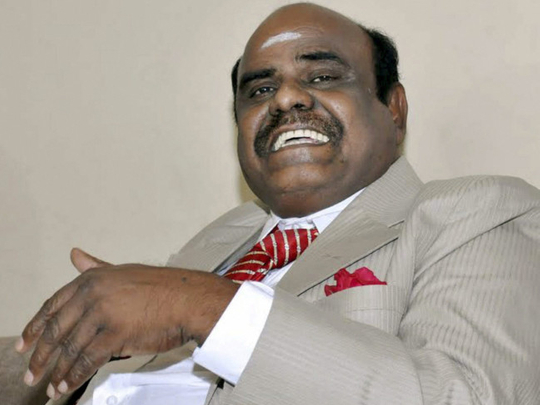
The curious case of C.S. Karnan, India’s first sitting judge to be sentenced for contempt of court compels one to draw on Alice in Wonderland. For this case is getting “curiouser and curiouser” by the hour. Apparently the judge is on the run, and his whereabouts unknown. Some say he has fled to France where his son resides. In the midst of these speculations, the judge’s advocate has turned up and sought relief from the Supreme Court. He has also assured the Court that the judge is very much in Chennai, though no sightings of him have been made so far.
Justice Karnan has had a controversial career since his appointment as a judge in 2009. He was recommended to the bench by Justice Ganguly, the then Chief Justice of the Madras High Court. The collegium accepted this elevation possibly to accommodate a Dalit [member of a lower caste] judge in the higher judiciary. The first sign of trouble arose in 2011, when Justice Karnan complained to the ‘National Commission for Scheduled Castes’ of victimisation by brother judges because he was a Dalit. Since then, there has been a slew of complaints and bizarre behaviour by him, which invited censure from the Supreme Court and he was transferred to the Kolkata High Court in 2016.
This simmering conflict between him and the apex court came to a head in January 2017 when he dropped a bombshell by levelling corruption charges against 20 sitting and retired judges of the Supreme Court and High Courts. Events thereafter rapidly spiralled out of control with the recalcitrant judge being sentenced and then going missing.
Justice Karnan’s eccentric challenge to the judicial order and thereby questioning the very sanctity of India’s higher judiciary has resulted in a constitutional imbroglio. This unseemly wrangle has put the spotlight on a variety of issues. The first concerns the use of contempt jurisdiction instead of impeachment proceedings, which, though protracted, was perhaps the correct procedure to follow.
Next, did the Supreme Court exercise administrative and disciplinary overreach by transferring Judge Karnan? The apex court has appellate jurisdiction over High Courts, but does not have administrative control. Further, the gag order issued by the Supreme Court, wherein the media was asked to refrain from reporting any further statement by Justice Karnan, is a breach of the Court’s own stand: Free speech is often challenged in India, but the apex court has stood by the principle of freedom of expression.
The gag order amounts to abrogation of a Fundamental Right, but the Supreme Court, in its wisdom, has chosen to impose this order. In hindsight, one wonders if the wisest thing for the court could have been do nothing for the Judge is due to retire in a few weeks.
The Karnan crisis has been brewing for some time and the apex court had chosen to sit on it.
In India, the Constitution, the rule of law and the Supreme Court are considered its crown jewels. The only political institution that retains credibility and commands respect is its higher judiciary and in particular the Supreme Court, for this is India’s brightest jewel. The country’s political class, its executive, its legislatures and its media lost their lustre a long time ago, tainted by corruption, pelf and greed. But now Justice Karnan, allegedly mentally unstable, and possibly an incompetent judge has had the courage to call out the higher judiciary.
Allegations of corruption in the judiciary have been made in the past as well, in fact prominent activist, Prashant Bhushan — termed the PIL or Public Interest Litigation warrior — has made charges of corruption in the higher judiciary. A case for contempt of court is pending against Bhushan also, so what is so special about Justice Karnan? Why has there been a firestorm?
Undoubtedly, much of it is due to the judge’s self-inflicted wounds and the consequent publicity, but he has also wittingly or unwittingly put the spotlight on the collegium system of appointment of judges in India — the system of judges selecting judges. Because how indeed could the collegium system have selected to the bench someone like Justice Karnan?
The opacity of judges selecting judges and the collegium’s inability to discover top-class talent are obvious and the current system needs a complete overhaul if the brightest jewel of India’s democracy is not to lose its shine. The National Judicial Appointments Commission (NJAC) was to be the way forward for selection of judges, but the Supreme Court baulked and struck down the legislative bill that was moved to form NJAC. Perhaps this case may force the apex court to take a relook at its stand.
Should that happen, it would be the supreme irony: A delinquent judge coercing the apex court into doing the right thing, albeit unintentionally.
Ravi Menon is a Dubai-based writer, working on a series of essays on India and on a public service initiative called India Talks.










